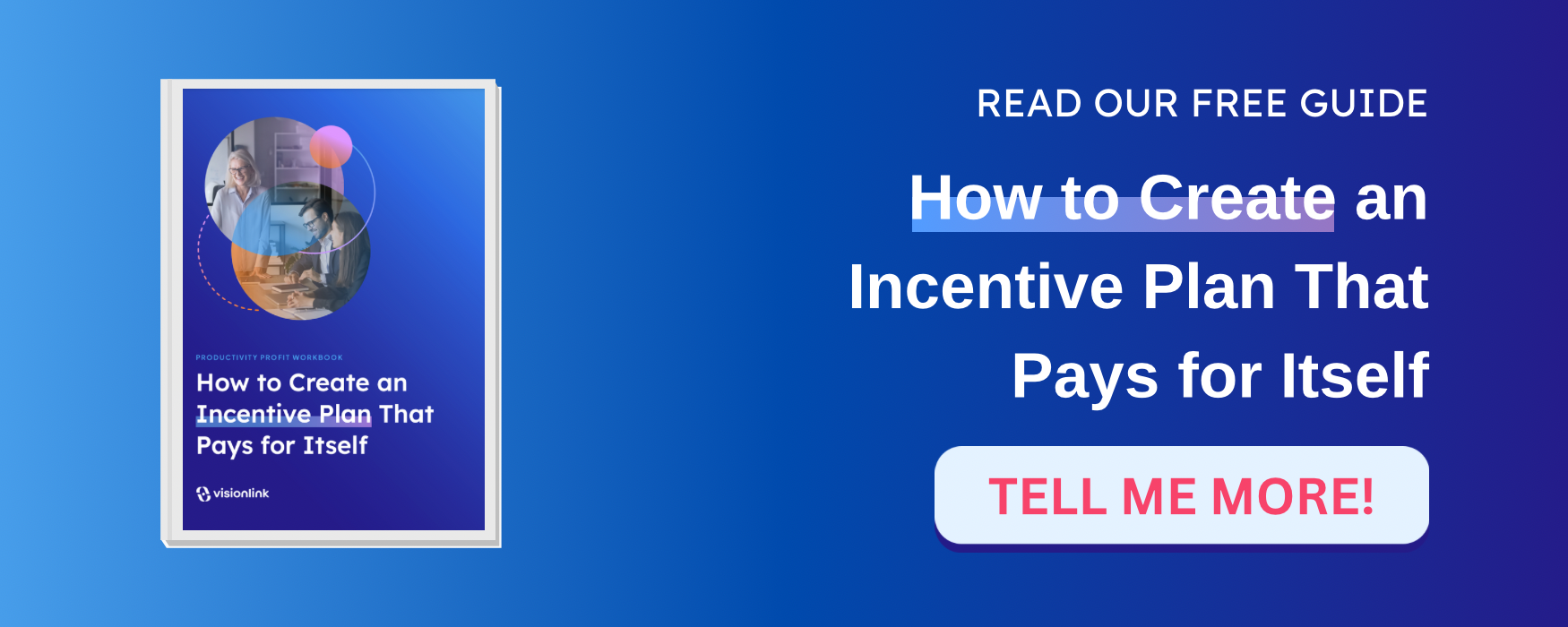5 Decisions that Will Ensure the Success of Your Long-Term Incentive Plan
April 19, 2021 • By Ken Gibson

Most company leaders want their key people to share their commitment to business growth. For that to happen, those leaders must be willing to reward the sustained value creation their employees produce. In other words, owners must be prepared to share value with those who help create it—and they need to have a mechanism (plan) for doing so. Few enterprise leaders disagree with this. However, yet just as few actually institute a long-term plan—at least not one that’s effective.
So, why is that? What is the barrier that keeps forward-thinking, ambitious chief executives and presidents from implementing something they know will help them achieve their growth goals?
Well, I suppose there are many reasons but the primary one is that they are not, in fact, confident a long-term incentive plan will lead to the achievement of their growth goals. What they do know is that it will require a costly long-term commitment without guaranteeing a corresponding long-term gain. That conflict keeps them from adding a plan to their compensation offering. They prefer investing in things that are a surer bet.
While it isn’t possible to eliminate all risk associated with rewarding sustained value creation, the exposure can be mitigated through careful planning. (More on that in a minute.) More importantly, there is actually more risk in not sharing value with those who help create it than in setting up some kind of plan. The danger of not having a long-term incentive plan is that your key people will feel like outsiders in your aims to grow the business. Therefore, they will naturally feel less committed to driving company growth. In short, if you’re not going to treat them as growth partners, you can’t expect them to act like ones.
The solution is to treat long-term value-sharing as a strategic issue. This means you will apply certain standards of scrutiny before implementing any specific program. This is no different than the way you approach other strategic investments the company makes. For example, when you develop a marketing strategy, you ask and answer vital questions before diving headlong into one campaign or another. You make decisions that increase the likelihood your marketing plan will be successful; that it will drive more than enough revenue and profits to justify the investment you are making.
It is no different in setting up a strategy to reward sustained performance and business growth. Asking the right questions and making key decisions ahead of time will mitigate the risk of the plan you implement and increase the likelihood the results your people will generate will more than offset the rewards you pay them. So let’s discuss what decisions you will need to make to create a long-term plan that is prone to succeed.
The 5 Decisions
There is one assumption inherent in the decision-making framework we’re about to discuss. It is that you believe people who help drive the growth of your business should participate in the value they help create. At VisionLink, we call this a Wealth Multiplier Philosophy. It is the belief that company growth will never occur without the help and commitment of its people. Therefore, the Wealth Multiplier Philosophy espouses that it is both fair and strategically prudent for employees to participate in the wealth multiple they help create. Why? Because when they have a vested interest in producing certain results, they are more inclined to drive those outcomes. They will also act more like stewards of shareholder interests if those interests are aligned with their own. So, if your company’s leadership does not possess this kind of mindset, then the decisions associated with the creation of a long-term value-sharing plan are of little consequence.
#1—Plan Purpose. How would you rank or score the importance of employee performance versus employee retention in what a long-term value sharing plan must help you achieve?
In other words, if you were to use a percentage weighting to compare those two elements, how would you rate the importance of each? Would it be 60% retention and 40% performance or vice versa? Or perhaps you are primarily focused on performance right now and have little concern for retention. In that case your ranking may be 90% performance and 10% retention.
What you define as your purpose for instituting a long-term value-sharing plan will determine both the type of plan you should consider and the nature of the benefits you provide under the plan. For example, if your emphasis is retention, you may not want to pay out benefits for five to eight years. Or it may not be until a participant retires or there is a change of control in the business.
If, on the other hand, you are primarily trying to reward sustained value creation (business value increase), both the plan type and the payout period will be tied to business growth. If each of those is equally important, you will probably consider some kind of phantom stock plan. Phantom equity requires an increase in business growth to create any meaningful payout and employees must meet vesting requirements before they are eligible for benefits under the plan.
#2—Duration. What is the time horizon you anticipate for the business under present ownership?
Do shareholders envision the company changing control in say five or 10 years, or is the time horizon indefinite? For a plan to be credible and provide a meaningful benefit, participants will want to know that the shareholders intend to fulfill their obligations under the plan. For example, they would be loath to participate in a rewards program that starts paying out benefits in six years, and every three to four years thereafter, only to find out the owners plan to sell the company in four to five years. The time horizon for the company will also determine the plan construct. For example, if owners do plan to sell the company in seven years, a change in control plan that only pays out benefits when the business transitions to new ownership will likely be more suitable than one that has payout intervals.
#3—Growth. Based on the time horizon for the business (see #2), what kind of growth do you anticipate for the business and how will it be measured?
Will the company be twice as big as it is now? Three times? And in what terms will that growth be measured: profits, revenue, enterprise value or some other measure?
A long-term value-sharing plan is intended to create a unified financial vision for growing the business. Therefore, it must reward the achievement of metrics and measures that evidence the growth being targeted is actually being achieved. That’s the whole premise of value-sharing. Your people participate in the value they help create. Therefore, you need to be able to define what value creation means for your business.
#4—Talent. How would you describe the type and quality of talent you will need to achieve your growth goals?
Are you going to need to attract strategic leaders from the upper half of your industry? The upper 25%? 10%? 5%? Obviously, the higher the quality of talent you need to attract (and retain), the more compelling your employee value proposition will need to be. And within that value offer, the importance of a long-term incentive plan magnifies as the quality of the talent you need to hire increases.
This is pretty much common sense. You may be a private company competing for talent coming out of a public environment where they received stock options, participated in an executive retirement plan and were given supplement security programs that provided substantial life insurance and disability income coverage. You will need to identify the factors that will be important to the people you need to hire and craft your value-sharing approach accordingly.

#5—Plan Type. What type of long-term value sharing plan is best suited to address all of the issues identified in numbers one through four above?
Unfortunately, most companies leap right into deciding the kind of plan they will put in place without addressing the other decisions first. This happens, in part, because leaders make a determination about a plan type in a vacuum. They do so without consideration for the plan’s impact on the overall compensation offering or without weighing the other factors we just discussed. This is what leads to so many businesses being dissatisfied with their value-sharing offerings.
Working through the four decisions just introduced helps to narrow the universe of plans that could reasonably be used to meet your objectives. For example, if you have an aggressive growth plan, need to recruit and retain high quality talent, and there is a long-term horizon before the business will be sold, you are not likely going to implement a profit pool as your value-sharing solution. Instead, you want your people’s interests tied more to enterprise value increase and their attention focused on long-term strategies that can leverage business growth. You can use the metrics of your annual bonus plan to emphasize the importance of driving profits. Your short-term incentive, then, becomes a kind of companion to your LTIP in driving the overall performance you are targeting. Having both plans structured properly will emphasize the need for your key people to adopt a balanced view of their priorities. They will recognize the need to work hard on meeting this year’s targets while keeping one eye trained on the future.
If, as stated, one of your conclusions is that your long-term plan must help you attract great people, then it probably means you are going to be competing for employees that having been working in the public arena. As mentioned earlier, they have probably had stock options, supplemental benefit plans and other perks as part of their compensation package. They are going to want to know how your offering will either match or offset the financial partnership they’ve had with their previous employer. These issues also serve to narrow the range of long-term plans you should be considering.
It is not likely that you can avoid providing a long-term value-sharing plan to your employees in today’s business environment without your value proposition being deemed uncompelling and incomplete. That will hurt you in all of the areas we have just discussed but particularly in recruiting the kind of people you will need to succeed in the new economy and getting them to drive sustained results. Hopefully, these five decisions will help you envision how the right kind of plan can be identified and implemented in your organization—and that proper planning will ensure your offering produces the outcomes you seek.
Ready to Get Started?
When it comes to building a compensation strategy, you can trust that VisionLink knows what works and what doesn’t. We are ready to share that knowledge with you.
Stay Connected
Receive free, ongoing access to updates on compensation and talent trends, reports, events, and more.
